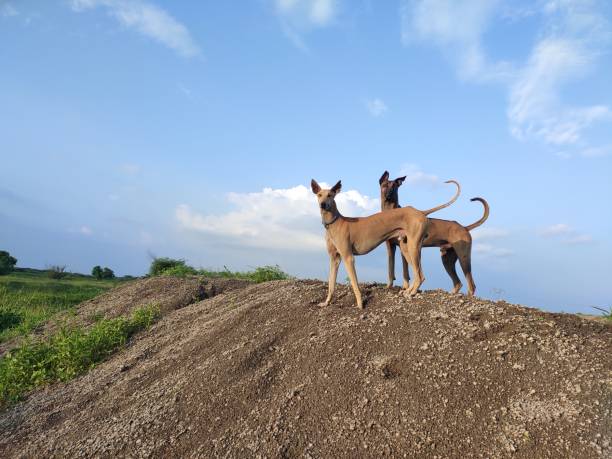Kombai

Breed History:
The Kombai is an ancient Indian dog breed that originated in the Kombai region of Tamil Nadu, in southern India. Also known as the Indian Bore Hound or Combai, it has been used for centuries by local tribes, especially the Maravar and Zamindar communities, for guarding property and hunting wild boar and other large game.
Known for its bravery and loyalty, the Kombai was historically prized by South Indian royalty and warriors for protection and combat. It was even used in military contexts during regional conflicts. This breed has survived for generations due to its functionality, resilience, and fierce territorial instincts, making it one of India’s most iconic native guard dogs.
Despite its heritage, the Kombai remains relatively unknown outside its region, and efforts to preserve the breed are ongoing.
Considering adopting an Kombai or a similar Indian Hound? Check out our page "How to look after an Indie Dog" detailing what to consider before adopting and our recommended products for an Indie Dog and similar hounds.
|
Gender |
Height |
Weight |
|
Male |
60-70 cm |
30-40 kg |
|
Female |
55-65 cm |
25-35 kg |
Size: Medium to Large
Life Expectancy: 12–15 years

Breed Appearance:
The Kombai is a muscular, athletic dog with a deep chest, broad head, and strong limbs built for strength and endurance. Its coat is short, smooth, and dense, usually in reddish-brown (tan) or dark brown shades, often with a black mask.
It has a slightly arched back, curved tail, and erect or semi-pricked ears, giving it an alert and formidable look. The breed’s expression is intense and confident, reflective of its guarding instincts.
Breed Type – Guardian/Hound:
Originally bred as both a guard dog and a boar hunter, the Kombai excels at protecting homes, livestock, and property. It is deeply loyal, territorial, and courageous, often willing to face off against larger animals or threats without hesitation.
It is reserved with strangers but deeply affectionate toward its family, forming a close bond with one or two primary handlers.

Training:
The Kombai is intelligent and fast-learning, but also independent and assertive:
-
Requires early socialisation and firm, calm training
-
Best suited for experienced handlers familiar with assertive breeds
-
Not overly playful—responds best to purpose-driven training
-
Positive reinforcement and consistency work better than punishment
-
Early obedience is essential for control and safety
With proper guidance, the Kombai becomes loyal, obedient, and respectful.
Health & Care:
The Kombai is generally hardy and disease-resistant, but potential issues may include:
-
Hip dysplasia (in ageing dogs)
-
Skin allergies (in unsuitable climates)
-
Tick and flea infestations
Routine vet checkups, parasite control, and a nutritious diet help maintain this breed's overall health.

Living Conditions:
The Kombai is best suited to rural or semi-urban homes with space and purpose:
-
Needs a secure compound or farm setting
-
Not ideal for apartment or small indoor-only living
-
Excellent with families and livestock, it is raised with
-
Wary of strangers—early socialisation helps manage this
-
May not tolerate unfamiliar dogs or animals unless socialised early
This is a working dog at heart—idle or confined Kombais may become aggressive or destructive.
Exercise:
High energy and working stamina:
-
Needs at least 1.5 hours of physical activity daily
-
Enjoys patrolling, guarding, and running off-leash in fenced areas
-
Mental stimulation is crucial—responds well to obedience routines and tasks
-
Should not be left chained or inactive for long periods
Exercise keeps the Kombai focused and balanced.
Grooming:
Very low maintenance:
-
Weekly brushing to remove loose hair
-
Bathing only when necessary
-
Routine ear cleaning, nail trimming, and dental care
-
Tick prevention is important in warm, outdoor settings
Sheds minimally and tolerates heat well but may need shelter in harsh winters.

Advantages:
-
Brave, loyal, and deeply protective
-
Low grooming and upkeep needs
-
Excellent guard dog and family protector
-
Adapted to Indian climates and conditions
-
Long lifespan and natural resilience
-
Strong hunting and deterrence instincts
Disadvantages:
-
Not suited for first-time or timid dog owners
-
Can be aggressive toward strangers and unknown dogs
-
Requires early training and consistent leadership
-
Needs space and purpose—not a lapdog or apartment breed
-
May become overprotective or reactive if under-socialised
-
Rare outside southern India—limited availability and breeder access

